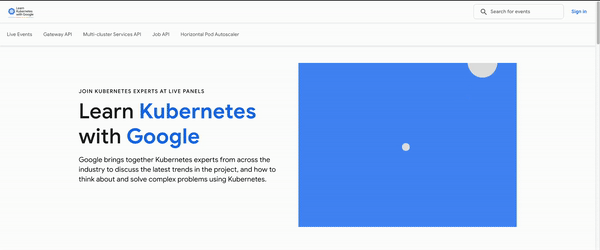We just wrapped up the final projects for Google Summer of Code 2022 and want to share some highlights from this year’s program. We are pleased to announce that a total of 1,054 GSoC contributors successfully completed the 2022 cycle.
2022 saw some considerable changes to the Google Summer of Code program. Let’s start with some stats around those three major changes:
- The standard 12-week project length was used by 71.2% of contributors while 19.21% spent between 13–18 weeks on their project, while 9.33% of GSoC contributors took advantage of the 19–22 week project lengths. It is clear from feedback written by mentors and contributors alike the option for extended project lengths was a hit with participants.
- GSoC 2022 allowed both medium-size (~175 hours) and large-size (~350 hours) projects. For 2022, 47% of the contributor projects were medium while 53% were large projects.
- This year the program was also open to more than students for the first time and 10.4% of the accepted GSoC contributors were non-students.
In the final weeks of the program we asked contributors and mentors questions about their experiences with the program this year. Here are some of the key takeaways from the participants:
Favorite part of GSoC 2022
There were a few themes that rose to the top when contributors were asked what their favorite part of the program was:
- Getting involved in their organization’s open source community with folks from all around the world and their amazing mentors.
- Learning new skills (programming languages, skills, new technologies) and learning more about open source communities.
- Contributing to a meaningful community and project.
- Learning from experienced and thoughtful developers (their mentors and their whole community).
Improved programming skills
96% of contributors think that GSoC helped their programming skills. The most common responses to how GSoC improved their skills were:
- Improving the quality of their code through feedback from mentors, collaboration and learning more about the importance of code reviews.
- Gaining confidence in their coding skills and knowledge about best practices. Learning how to write more efficient code and to meet the org’s coding standards.
- Ability to read and understand real complex codebases, and learning how to implement code with other developer’s code.
Most challenging parts of GSoC
- Managing their time effectively with many other commitments.
- Initial days starting with the organization, understanding the codebase, and sometimes learning a new programming language along the way.
- Communicating with mentors and community members in different time zones and collaborating remotely.
Additional fun stats from GSoC Contributors
- 99% of GSoC contributors would recommend their GSoC mentors
- 98% of GSoC contributors plan to continue working with their GSoC organization
- 99% of GSoC contributors plan to continue working on open source
- 35% of GSoC contributors said GSoC has already helped them get a job or internship
- 84% of GSoC contributors said they would consider being a mentor
- 95% of GSoC contributors said they would apply to GSoC again
We know that’s a lot of numbers to read through, but folks ask us for more information and feedback on GSoC each year. Our hope is that we succeeded in providing additional details for this 2022 program. Every mentor and GSoC contributor took the time to fill in their evaluations and give us great written feedback on how the program affected them so we wanted to highlight this.
As we look forward to Google Summer of Code 2023, we want to thank all of our mentors, organization administrators, and contributors for a successful and smooth GSoC 2022. Thank you all for the time and energy you put in to make open source communities stronger and healthier.
Remember GSoC 2023 will be open for organization applications from January 23–February 7, 2023. We will announce the 2023 accepted GSoC organizations February 22 on the program site: g.co/gsoc. GSoC contributor applications will be open March 20–April 4, 2023.
By Stephanie Taylor, Program Manager – Google Open Source







 We are thrilled to announce the 2023
We are thrilled to announce the 2023 









